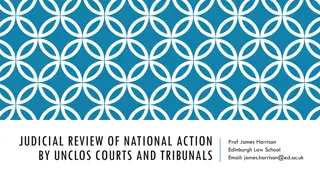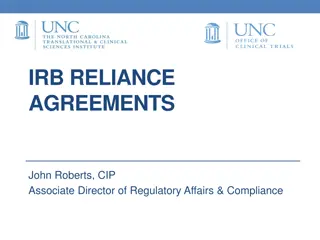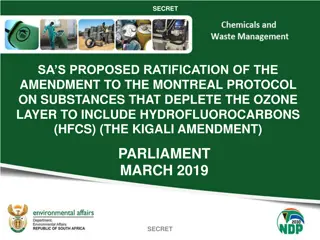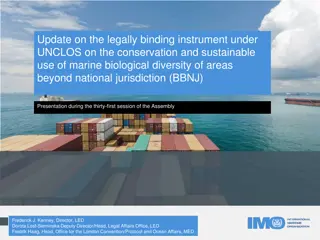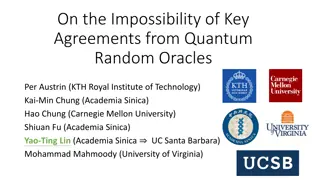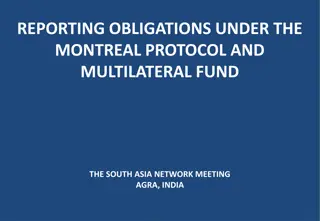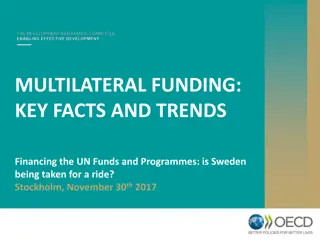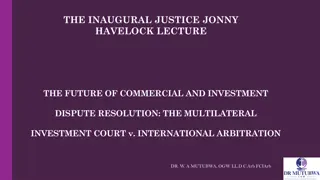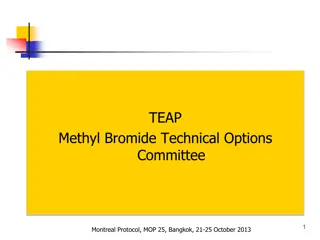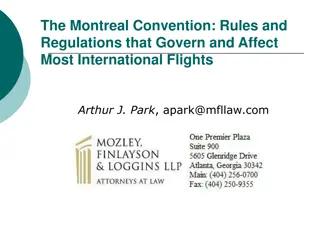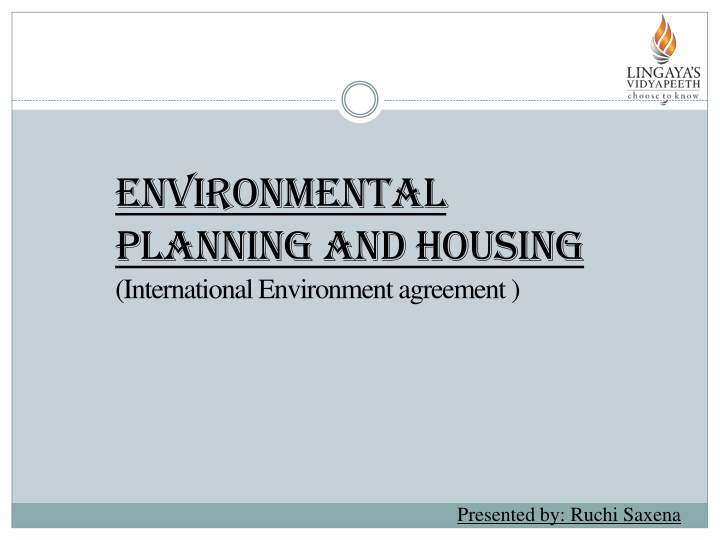
Multilateral Environmental Agreements of the 1980s: UNCLOS, Montreal Protocol, Basel Convention
Explore the significant Multilateral Environmental Agreements (MEAs) of the 1980s, including UNCLOS, Montreal Protocol, and the Basel Convention, focusing on their environmental provisions and global impact. Learn about the Earth Summit and its key achievements at the UNCED event.
Download Presentation

Please find below an Image/Link to download the presentation.
The content on the website is provided AS IS for your information and personal use only. It may not be sold, licensed, or shared on other websites without obtaining consent from the author. If you encounter any issues during the download, it is possible that the publisher has removed the file from their server.
You are allowed to download the files provided on this website for personal or commercial use, subject to the condition that they are used lawfully. All files are the property of their respective owners.
The content on the website is provided AS IS for your information and personal use only. It may not be sold, licensed, or shared on other websites without obtaining consent from the author.
E N D
Presentation Transcript
Environmental Planning and Housing (International Environment agreement ) Presented by: Ruchi Saxena
Multilateral environmental agreements Some of the major Multilateral Environmental Agreements (MEAs) of the 1980s are: the 1982 United Nations Convention on the Law of the Sea (UNCLOS); the 1987 Montreal Protocol on Substances that Deplete the Ozone Layer (implementing the 1985 Vienna Convention for the Protection of the Ozone Layer); and the 1989 Basel Convention on the Control of Transboundary Movements of Hazardous Wastes and their Disposal (Basel Convention).
Law of the Sea Its environmental provisions include: the extension of sovereign rights over marine resources, such as fish, within the 200-mile exclusive economic zones (EEZs); obligations to adopt measures to manage and conserve natural resources; a duty to cooperate regionally and globally with regard to environmental protection and research related to this protection; a duty to minimize marine pollution, including land-based pollution; and restrictions on marine dumping by ships
The Montreal Protocol The Montreal Protocol to the Vienna Convention on Substances that Deplete the Ozone Layer, which entered into force in 1989 and had 182 parties as of December 2001, is one of the most successful examples of international environmental cooperation.
The Earth Summit UNCED was attended by an unprecedented number of representatives of state, civil and economic society 176 governments (UN 1993), more than 100 heads of state compared to the two who attended the 1972 Stockholm Conference (Haas, Levy and Parson 1992), and an estimated 10 000 delegates, 1 400 nongovernmental organizations (NGOs) and about 9 000 journalists (Demkine 2000). It is still the largest such gathering ever held.
The Summit produced at least seven major achievements: _ the Rio Declaration on Environment and Development (containing 27 principles); _ Agenda 21 a blueprint for environment and development into the 21st century; _ two major international conventions the United Nations Framework Convention on Climate Change (UNFCCC) and the Convention on Biological Diversity (CBD); _ the Commission on Sustainable Development (CSD); _ agreement to negotiate a world desertification convention; and _ the statement of Principles for the Sustainable Management of Forests.
The Global Environment Facility The Global Environment Facility (GEF) was created in 1991 as an experimental partnership involving UNEP, UNDP and the World Bank to generate ecological dividends from local and regional development by providing grants and low-interest loans to developing nations and economies in transition. Following the Summit, it was intended to be the financing mechanism for Agenda 21, and was expected to mobilize the necessary resources
The Earth Summit UNCED was attended by an unprecedented number of representatives of state, civil and economic society 176 governments (UN 1993), more than 100 heads of state compared to the two who attended the 1972 Stockholm Conference (Haas, Levy and Parson 1992), and an estimated 10 000 delegates, 1 400 nongovernmental organizations (NGOs) and about 9 000 journalists (Demkine 2000). It is still the largest such gathering ever held.
The Summit produced at least seven major achievements: _ the Rio Declaration on Environment and Development (containing 27 principles); _ Agenda 21 a blueprint for environment and development into the 21st century; _ two major international conventions the United Nations Framework Convention on Climate Change (UNFCCC) and the Convention on Biological Diversity (CBD); _ the Commission on Sustainable Development (CSD); _ agreement to negotiate a world desertification convention; and _ the statement of Principles for the Sustainable Management of Forests.



